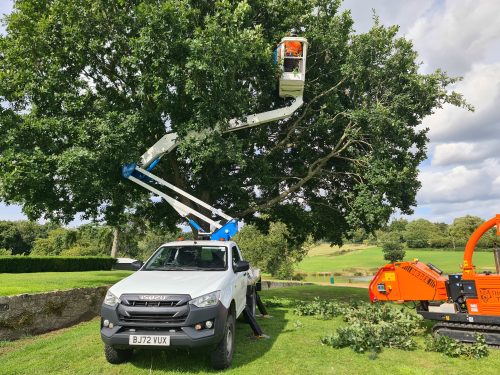 https://www.wilsontreesurgery.com/wp-content/uploads/2024/09/20230807_162313-500x375.jpg
https://www.wilsontreesurgery.com/wp-content/uploads/2024/09/20230807_162313-500x375.jpg
Machinery used in utility arboriculture
Read more
by Wilson Tree Surgery |
When it comes to caring for trees, the terms “tree surgeon” and “arborist” are often used interchangeably. However, these two professions have distinct roles and responsibilities. In this blog post, we will explore the unique roles each profession plays in the world of arboriculture.
Tree Surgeons:
Tree surgeons, also known as arboricultural surgeons, are professionals trained in the surgical aspects of tree care. Their primary focus is on the health and safety of trees, especially in urban environments. Tree surgeons specialise in the diagnosis and treatment of tree diseases, pest infestations, and structural issues that may compromise the tree’s integrity.
Key responsibilities of tree surgeons include:
Pruning: Tree surgeons are experts in the art of pruning, removing dead or diseased branches to enhance the tree’s overall health and appearance.
Tree Removal: When a tree poses a risk to its surroundings due to disease, instability, or other factors, tree surgeons may be called upon to safely remove it.
Emergency Response: In the event of storm damage or other emergencies, tree surgeons are often the first responders, clearing fallen trees and branches to ensure public safety.
Planting: Tree surgeons are knowledgeable about proper tree planting techniques and may be involved in selecting and planting suitable tree species for specific locations.
Arborists:
Arborists, on the other hand, have a broader scope of expertise within the field of arboriculture. An arborist is a professional trained in the cultivation, management, and study of trees, shrubs, and other perennial woody plants. Arborists are concerned with the overall well-being of trees and their ecosystems.
Key responsibilities of arborists include:
Tree Health Assessment: Arborists assess the health and condition of trees, identifying diseases, pests, and environmental stressors that may impact the tree’s vitality.
Soil Management: Arborists understand the importance of soil health in tree growth. They may recommend soil amendments to improve nutrient levels and drainage.
Urban Forestry: Arborists often work in urban forestry, planning and managing tree populations in cities and suburban areas to enhance the urban environment.
Tree Preservation: Arborists advocate for the preservation of existing trees, promoting sustainable practices to protect mature trees during construction and development projects.
While both tree surgeons and arborists share a common goal of promoting tree health, their roles differ in focus and expertise. Tree surgeons specialise in the surgical aspects of tree care, addressing immediate issues and concerns, while arborists have a more comprehensive approach, considering the long-term health and sustainability of trees in their natural environment. By understanding the distinctions between these two professions, we can better appreciate the collaborative effort required to maintain a thriving urban forest and preserve our natural green spaces.
 https://www.wilsontreesurgery.com/wp-content/uploads/2024/09/20230807_162313-500x375.jpg
https://www.wilsontreesurgery.com/wp-content/uploads/2024/09/20230807_162313-500x375.jpg
Read more
 https://www.wilsontreesurgery.com/wp-content/uploads/2024/09/AdobeStock_475873508-500x333.jpeg
https://www.wilsontreesurgery.com/wp-content/uploads/2024/09/AdobeStock_475873508-500x333.jpeg
Read more
 https://www.wilsontreesurgery.com/wp-content/uploads/2024/09/pexels-valiphotos-589802-500x333.jpg
https://www.wilsontreesurgery.com/wp-content/uploads/2024/09/pexels-valiphotos-589802-500x333.jpg
Read more